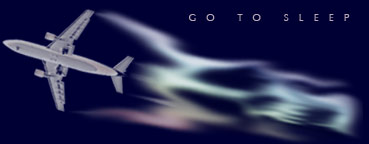Open Letter To Climate and/or Atmosphere ScientistsMarcus KarrJul. 18, 2007 |
Popular 
Claim Jewish Student Was 'Stabbed In The Eye' by Pro-Palestine Protester Draws Mockery After Video Released

Senate Passes $95B Giveaway to Israel, Ukraine, and Taiwan, Combined With TikTok Ban

'These Protesters Belong in Jail': Gov. Abbott Cheers Arrest of Pro-Palestine Protesters at UT Austin

Mike Johnson Pushes Debunked Lie That Israeli Babies Were 'Cooked in Ovens' On October 7

'It Has to Be Stopped': Netanyahu Demands Pro-Palestine Protests at U.S. Colleges Be Shut Down
  Dear Climate and/or Atmosphere Scientist, Dear Climate and/or Atmosphere Scientist, The heated debate on global warming seems to be cooling down, as, after a review of the relevant factors - including 'increasing atmospheric concentrations of greenhouse gases'; 'global changes to land surface, such as deforestation' and urban heat islands; 'increasing atmospheric concentrations of aerosols' (1); and even some ideas that seem to be out in space, such as cosmic rays and variations in sun activity (2) - a consensus seems to have been reached that increased carbon dioxide, methane, and nitrous oxide emissions are the primary determining factor (3). It is the opinion of this author that such a consensus is premature, owing to the fact that not all the evidence has been submitted. Certain advanced nations have been purposefully tampering with the atmosphere for some time now. Half a century ago their method of choice was the use of atomic weapons (4), but since then their arsenal has grown in sophistication to include the 'injection of chemical vapors and heating or charging via electromagnetic radiation or particle beams'. In a 1996 US Air Force review of the subject, it was emphasized that 'many techniques to modify the upper atmosphere have been successfully demonstrated experimentally' (5). The abstract from the proceedings of a 1990 conference held on 'Ionospheric Modification and Its Potential to Enhance or Degrade the Performance of Military Systems' noted lamentably that 'interest in the [upper atmosphere] has been focused on identifying and quantifying the limitations it imposes on [military] systems, rather than on ways it might be altered, or controlled' (ed.: all italics in this paper are mine). Nevertheless, the authors go on to say that 'A variety of [atmospheric] modification techniques are being investigated, both ground- and space-based, to increase or decrease existing ionization or to create independent artificial plasmas. These techniques include high power radio waves, lasers, particle beams, and chemical releases' (6). The Air Force review mentioned above referred to such 'independent artificial plasmas' as the 'creation of an artificial ionosphere'. One of the papers submitted to the 1990 conference - focusing on 'Theoretical and experimental research on the creation, maintenance, and control of artificial layers of ionization in the 50 to 90 km altitude range' - discusses the use of 'artificial ionospheric mirrors' (AIM) in terms of 'a specific technical approach, the use of ground-based, very high power, RF waves to breakdown the atmosphere' (7). We find one stated purpose for creating an artificial ionosphere in the patent for artificial ionospheric mirrors (8), which reads: In the past, the technique of using the ionosphere as a mirror to reflect radio waves, or RF energy, has given Ham Radio operators the ability to send transmissions over long distances. This technique has also provided radar systems the ability to look 'over the horizon'. Variations and fluctuations in the ionosphere, however, can render the effectiveness of such communications uncertain. Thus, the desirability of creating controllable plasma layers in the atmosphere...has been recognized. The patent outlines quite clearly the means by which artificial ionospheres are created: 3. An apparatus for generating an AIM comprising: (a) a phased array heater antenna which is focused at an altitude to cause an avalanche ionization area to be created in the atmosphere There are not many 'phased array heater antennas' in the world, and those few have attracted some controversy - perhaps you know which I am talking about - so I am not going mention them here by name. If you remember from the Air Force review I quoted above, atmospheric modification has been achieved by means of 'injection of chemical vapors and heating or charging via electromagnetic radiation or particle beams'. I have said a word about 'heating or charging via electromagnetic radiation', and now I would like to briefly mention the purposeful 'injection of chemical vapors'. A 1990 Stanford University paper entitled 'Overview of Ionospheric Modification from Space Platforms' discusses 'non-electromagnetic methods of modifying...the terrestrial ionosphere' (9). The abstract goes on: Of these [methods], the most well-understood is the direct injection of chemical vapors into the ambient medium. ... Modification to the ionosphere can last for up to hours from [barium] injections. Other vapors have also been released, including water vapor, SF 6 and more noxious gases, in successful efforts to alter the chemistry of the ionosphere. In addition to the Stanford paper, a 1979 University of Alaska study entitled 'Chemical releases in the ionosphere' reported that 'Development of the thermite barium release technique enabled observation of both neutral and ion motions, the latter leading rather directly to determination of ionospheric electric fields' (10). At this point the skeptic inside you might object that these releases were made into the upper reaches of the atmosphere, in near space, where, it seems, there is not much effect on the climate-determining processes of the lower atmosphere. However, given the existence of an artificial ionosphere in the 50 km to 90 km altitude range, it appears likely that barium and other chemical releases should be made rather closer to home, for the purposes of 'altering the chemistry' and 'determining the electric fields' of said artificial ionosphere. Finally I would like to pose some obvious questions, which I am not qualified to answer but on which perhaps you may be able to shed some light. 1. What is the effect of an artificial ionosphere on climate and the weather? 2. What is the effect of deliberate chemical releases of barium 'and more noxious gases' into the atmosphere, on climate and the weather? 3. What is the effect of 'electromagnetic radiation and particle beams', on climate and the weather? 4. Are said effects likely to be negligible - that is, unworthy of study - in the study of climate and the weather? 5. If said effects are in fact not negligible, then why have these factors not been scrutinized or addressed? Regards, Marcus Karr Concerned citizen of the United States --- Works Cited 1. Attribution of Recent Climate Change http://en.wikipedia.org/wiki/Attribution_of_recent_climate_change 2. Khabibullo Ismailovich Abdusamatov http://en.wikipedia.org/wiki/Khabibullo_Ismailovich_Abdusamatov 3. Climate Change 2007: The Physical Science Basis: Summary for Policymakers; Intergovernmental Panel on Climate Change http://www.ipcc.ch/SPM2feb07.pdf 4. Operation Argus http://en.wikipedia.org/wiki/Project_Argus Starfish Prime http://en.wikipedia.org/wiki/Project_Starfish 5. Concept of Operations, from Weather as a Force Multiplier: Owning the Weather by 2025; United States Air Force, 1996 http://www.fas.org/spp/military/docops/usaf/2025/v3c15/v3c15-4.htm 6. Conference Proceedings on Ionospheric Modification and Its Potential to Enhance or Degrade the Performance of Military Systems Held in Bergen, Norway on 28-31 May 1990; Advisory Group For Aerospace Research And Development Neuilly-Sur-Seine (France) http://stinet.dtic.mil/oai/oai?&verb=getRecord&metadataPrefix=html&identifier=ADA239823 7. Artificial Ionospheric Mirrors (AIM). A: Concept and issues; Kossey, Paul A., et. al; AGARD, Ionospheric Modification and its Potential to Enhance or Degrade the Performance of Military Systems pg. 11; 1990 http://adsabs.harvard.edu/abs/1990imip.agarS....K 8. Patent No. 5041834, issued 1991 http://www.google.com/patents?vid=USPAT5041834 9. Overview of Ionospheric Modification from Space Platforms; Banks, Peter; 1990 http://stinet.dtic.mil/oai/oai?&verb=getRecord&metadataPrefix=html&identifier=ADP006512 10. Chemical Releases in the Ionosphere; Davis T N; Rep. Prog. Phys.; 1979 http://www.iop.org/EJ/abstract/0034-4885/42/9/003 |



